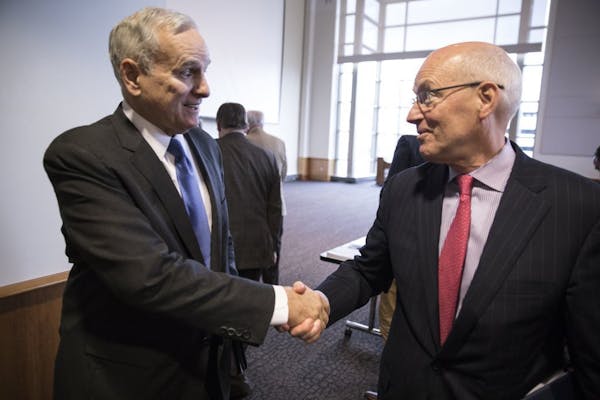State spending for 2016-17 came in $245 million below forecast in the state budget document released Friday, and almost of all that reflected dramatic savings in Minnesota's health care programs.
Forecasters had more good news for the next budget period, trimming health spending projections by another $173 million. Together, the adjustments show how dramatic changes in the national and state health care markets have contributed to Minnesota's budget surpluses.
But budget observers caution that after a three- to four-year lull, underlying costs are on the rise. That can have significant impacts on the state's bottom line because health care, including the Medical Assistance program for the poor, represents one-quarter of the state budget, second only to education.
"The thing that endures is budget surpluses and budget deficits that are driven by swings in health care spending," Jim Schowalter, president of the Minnesota Council on Health Plans and a former state budget commissioner.
The latest signs point to a return of rising costs.
"During the recession and right after, we saw a tremendous slowdown in the growth of health care," said Stefan Gildemeister, state health economist at the Minnesota Health Department. "The period of slow growth seems to have come to a halt," he said.
But, he added, "The growth we expect is still moderate by historical standards, when we were seeing double-digit increases."
Aging population
Friday's forecast lowered health care spending projections in the current budget period by $206 million, but that change did not reflect lower prices paid by the state. Instead, fewer people enrolled in Medical Assistance than expected.
Looking longer term, the forecast released Friday projects a 14 percent increase in overall health care spending for the two-year budget period beginning in 2018 — making it the largest driver of growth in General Fund spending.
Leading that growth is an expected addition of 70,000 residents to Medical Assistance, a program that has swollen by more than 275,000 people since 2013, when the state opted to expand eligibility under the Affordable Care Act. With more than 1 million enrollees, Medical Assistance now insures one out of every five Minnesota residents.
In addition to that expansion, the aging of the population is leading to higher enrollments in services for the elderly and the disabled, which make up 70 percent of Medical Assistance spending.
Spending on long-term care, such as nursing homes, is projected to grow the fastest, at an annual rate of 4.5 percent. Overall, spending on services for the elderly and disabled is projected to grow 32 percent over the next two budget periods.
These changes come as health care inflation is starting to rise after several years of stagnation. Prescription drug price increases have been one high-profile symbol of rising costs, but Schowalter said cost increases are widespread.
"The key is everyone's medical expenses are a lot higher," he said.
Glenn Howatt • 612-673-7192
